1283 Talking a blue streak
Answer to Blue
by Russell Thornton
Madeira Park: Harbour Publishing, 2021
$18.95 / 9781550179675
Reviewed by Susan McCaslin
*
 Russell Thornton’s Answer to Blue (Harbour Publishing, 2021) is a tour de force of finely crafted, thematically linked poems. Its evocative title is drawn from D.H. Lawrence’s poem, “Flowers and Men” where Lawrence concludes: “Tell me, is the gentian savage, at the top of its coarse stem? / Oh what in you can answer to this blueness?” Once readers enter the world of this book they will never look at “blueness” in the same way again.
Russell Thornton’s Answer to Blue (Harbour Publishing, 2021) is a tour de force of finely crafted, thematically linked poems. Its evocative title is drawn from D.H. Lawrence’s poem, “Flowers and Men” where Lawrence concludes: “Tell me, is the gentian savage, at the top of its coarse stem? / Oh what in you can answer to this blueness?” Once readers enter the world of this book they will never look at “blueness” in the same way again.
Unified by nuanced meditations on blueness, this volume is grounded in Thornton’s family history, one which carries both intergenerational trauma and intergenerational gifts. Like other of his volumes, these poems explore his connection to the land, beaches, and seascapes of North Vancouver. In three symphonic movements, the poems evolve the concerns of his seven previous volumes into a synthesis that unites personal and familial history with the question of how to be in the world during a time of both fragmentation and transformation.
Thornton’s previous volumes have been highly lauded. His House Built of Rain (2003) was shortlisted for the 2004 Dorothy Livesay Poetry Prize and the 2004 ReLit Award. Birds, Metals, Stones and Rain (Harbour, 2013) was shortlisted for the Governor General’s Award for English-language poetry, the 2014 Raymond Souster Award, and the 2014 Dorothy Livesay Poetry Prize. The Hundred Lives (2014) was shortlisted for the 2015 Griffin Poetry Prize. In my estimation, this new volume reveals Thornton as one of Canada’s finest poets writing at this time, whose work deserves the highest honours.
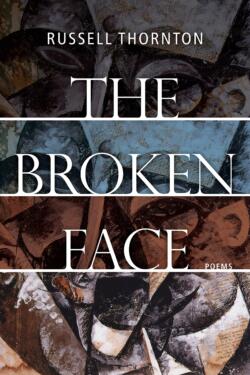
Part I of Answer to Blue opens with “Blinds,” where blinds are presented as mechanical devices that open and close at human bidding to let in or exclude light. Then deftly, the poem turns to explore “blinds” as a metaphor for perception, how the you/me split, the dualism of subjectivity and objectivity is an illusion:
Close them if you want or open them.
The set of blinds is the hostage of our eyes….
Close them if you want. Or open them.
You, me, you, me, you, me….
We overlap and share blind desire.
This poem is followed directly by “Hinge,” which examines a door hinge as a metaphor for how consciousness pivots between speech and silence, love and potential violence:
I am a hinge
when I speak, a hinge
when I say nothing. A hinge
when I frame a caress,
a hinge when I hold a weapon.
It’s not surprising that Thornton dwells on the particularities of mechanical objects, since many of his poems record the legacy of his father’s and paternal grandfather’s mechanical skills as well as his own. In “Unfinished,” the speaker finds himself seated in a “suburban public library / surrounded by shelves of books.” Gazing up at the heat ducts, he hints at how the work of his grandfather and father before him might be “finished” in him through reading literature and the craft of writing poetry:
… I try to finalize myself,
redo again and again, carry out work
to execute what I think to be true of myself
and fulfill my own prophecy of release
which says what is unfinished
of them will be finished in me.
Similarly, in “Design,” memories of the poet’s difficult and sometimes violent father, a man the poet describes as “architect-cum-artist-cum drug dealer,” compel the son to undertake another kind of designing:
I would redesign myself and stand
in the architecture of myself
even as I give myself up —
in the father ripples, the son ripples,
while the waters flow straight to the sea.
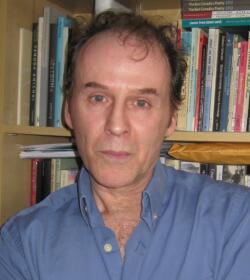
Earlier in “Love Letters” Thornton examines a period in his life when letters exchanged between him and his wife-to-be sustained them through legal and travel obstacles faced in the early days of their union. Lest readers assume Thornton’s poems are primarily autobiographical, it’s important to emphasize the accomplished musicality of his language and the mythological contexts on which he draws that layer and universalize the narrative content. In “The Notes That Are Left,” anaphora (repetitions of phrases down the margin of the page) combines with finely honed lyricism expressed in short, evocative lines. Here he integrates allusions to the Song of Songs in the line, “The notes that are love / stronger than death.” In “The Prometheus Eye,” the epigraph evokes the tragedian Aeschylus and the mystic poet William Blake. Russell’s attention to global mythologies places his storytelling within the compass of the cosmological and the sacred.
Part II opens with “Story of Mist,” which alludes to the Abraham and Isaac story in Exodus. Thornton ties the biblical account to his personal struggles by focussing on his relation to his own young son. Unlike Abraham, who lays his child on “the altar of time” in an act intended as obedience to his concept of a violent God, the speaker chooses another path: “I do what time tells me, I grab at faith / that he will remember I love him.” Several poems in this section express Thornton’s resolution to be a better parent than his own father and the patriarchal fathers before him.
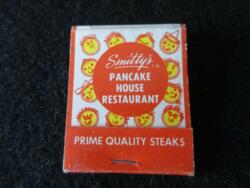
In “Debt,” we are introduced to the important figure of the poet’s mother, who was pregnant at sixteen with her first son, revealed in the poems as Thornton himself. Here and throughout the volume, she is depicted as a tremendously resilient “welfare mom” who, despite struggles raising her three sons, debt and poverty, treats her kids to “Smitty’s Burgers” and loves Elvis.
The most extended and powerful poem in Part II, “When I Do Not Love Her,” turns back to his relationship (implicitly with his wife) that opens with an epigraph from Shakespeare’s Othello: “…and when I love thee not / Chaos is come again.” Thornton again employs anaphora through the recurrent phrase, “When I do not love her.” The final stanza sums up love’s paradoxes:
When I do not love her,
chaos explores me
like a metaphor
for my not loving her
and for my loving her.
Part II concludes with “Facing the Wind,” which acknowledges the Tsleil-Waututh Nation’s name for Gates Park in North Vancouver — Whey-ah-Wichen, meaning, “faces the wind” in the Hunq’eme’nem language. On a beach of this sacred ground Russell releases his own two young children to the wind or primal spirit, just as he releases himself to the mysteries of “unknowing” regarding their possible futures.
Early poems in Part III, “Paths,” and “Kayak, Music,” address how colonization destroyed the aboriginal paths and forests in North Van, disrupting and destroying the less intrusive ways of the Indigenous people. In “Drums” Thornton speaks of how the drums called him home from his extensive travels as a younger man:
…The Squamish drums
that belonged to where I had been born continued.
And the beating let arise from beneath my feet
what was as soon distant, and of the unknown place,
with its skin of the only drum of home.
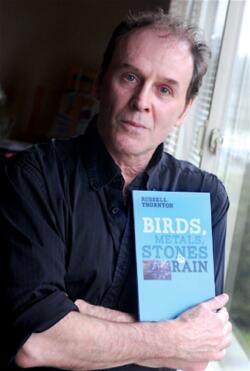
The final poems in Part III, turn to celebrate the feminine through the matriarchal lineages of Thornton’s mother and grandmother. The poems about Thornton’s mother are both celebrations of her life and stirring elegies. They convey his family’s tender care of her in her final year. The poems “Foal,” “Finding the Character,” My Mother and Elvis,” “Icon,” and “My Mother’s Last Birthday Dinner” reveal her humour, vitality, and courage. In “When the Whales Return” Thornton envisions his mother as a pregnant, teenager, comparable to a mother orca, associated with water and nurturance. In “Icon” he sees her in death,
transformed into a primitive icon:
two-dimensional, costumed
in the complete, unmixed colours
of the human and the divine,
unrecognizable to us except
in the delicate, endless green
of the eyes through which she sees.
The surprise of the last two poems of the book, “Glass” and “Last Rites,” ties to the background story of Thornton’s grandmother, born in 1918, a survivor of the Spanish flu, from whom he received the gift of poetry and sense of her ongoing presence. In “Glass” we learn that, though she worked her entire life as a secretary for a glass-manufacturing company, late at night she would write poems: “she would type out not invoices or bosses’ letters, / but the syllables for the music she heard in her head….”
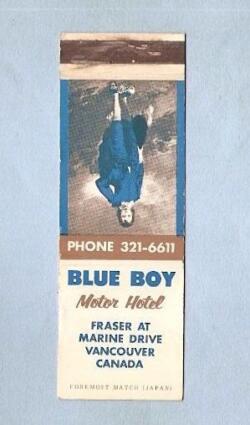
It is in this final section that Thornton gathers up earlier references to “blue” and “blueness,” bringing the unifying metaphor to its apogee in the long poem “Blue.” Up to this point we have encountered shades of blueness everywhere. In Part I, “Tiger’s Paw” (IV) expresses how “Furious matter will lift into street-side flower petals, circle up into a blueness.” In part II, “The Blue Boy” recalls how his grandmother held a day job at the Blue Boy Hotel in Vancouver where a giant neon replica of Thomas Gainsborough’s famous Blue Boy painting was displayed.
The centrepiece of the book is the long poem “Blue” in which a woman “with a driftwood stick” traces the word for water in the sand in a foreign language, teaching the poet a new word for water: “I sounded out the word you spelled in your language / as if it were the first word I had ever learned.” Her explanation that the word for blue in her language is also the word for water or “like water” becomes an epiphany for the poet. Blueness flows both within and without, seen differently when experienced through different lenses. The poem suggests that language and reality, words and their referents, remain in constant dialogue. Blue is separate and one, held within the body and within perception. It is a unifying reality, knowable and unknowable, named and nameless. We can “answer” it, not in words or concepts, but by being present to these primal, elemental energies from deep time that flow through us and are much vaster than ourselves:
If you have seen
how I move through water, fire, dust and air to find you,
and move through blue, that is the way
you will teach my hand, that is the way you will
root the tongue that knows the name of blue in my throat.
Answer to Blue chants notes of melancholia and sadness as does the “the blues” in music. Section III completes the trilogy by opening to places of acceptance, gratitude, and celebration. Thornton’s poems establish a balance between living with one’s gaze on mortality and suffering as well as experiencing healing and regeneration through the mysterious power of love.
*

Susan McCaslin is a BC poet residing outside Fort Langley who has published sixteen volumes of poetry, including her most recent, Heart Work (Ekstasis Editions, 2020) [reviewed here by Jessica Walters — Ed.]. Into the Open: Poems New and Selected was published by Inanna Publications in 2017 and Demeter Goes Skydiving won the Alberta Book Publishing Award (Robert Kroetsch Poetry Book of the Year) in 2012. She has edited two poetry anthologies, published a volume of essays and reflections, and a work of creative non-fiction on Thomas Merton [reviewed here by Phyllis Reeve — Ed.]. A chapbook titled Cosmic Egg came out through the Alfred Gustav Poetry Series in Spring of 2021. Susan can often be found walking with her dog Rosie along the Fraser River, better known to the Kwantlen First Nations as the Stó:lō, the Halqemeylem word for “river.” She initiated the Han Shan Poetry Project in 2012, which helped save an endangered forest in Glen Valley near her home. Editor’s note: Susan McCaslin has also reviewed a book by Elizabeth Brewster & Ingrid Ruthig for The Ormsby Review.
*

The Ormsby Review. More Books. More Reviews. More Often.
Publisher and Editor: Richard Mackie
The Ormsby Review is a journal service for in-depth coverage of BC books and authors in all fields and genres. The Advisory Board consists of Jean Barman, Wade Davis, Robin Fisher, Cole Harris, Hugh Johnston, Kathy Mezei, Patricia Roy, Maria Tippett, and Graeme Wynn. Scholarly Patron: SFU Graduate Liberal Studies. Honorary Patron: Yosef Wosk. Provincial Government Patron since September 2018: Creative BC
“Only connect.” – E.M. Forster
One comment on “1283 Talking a blue streak”